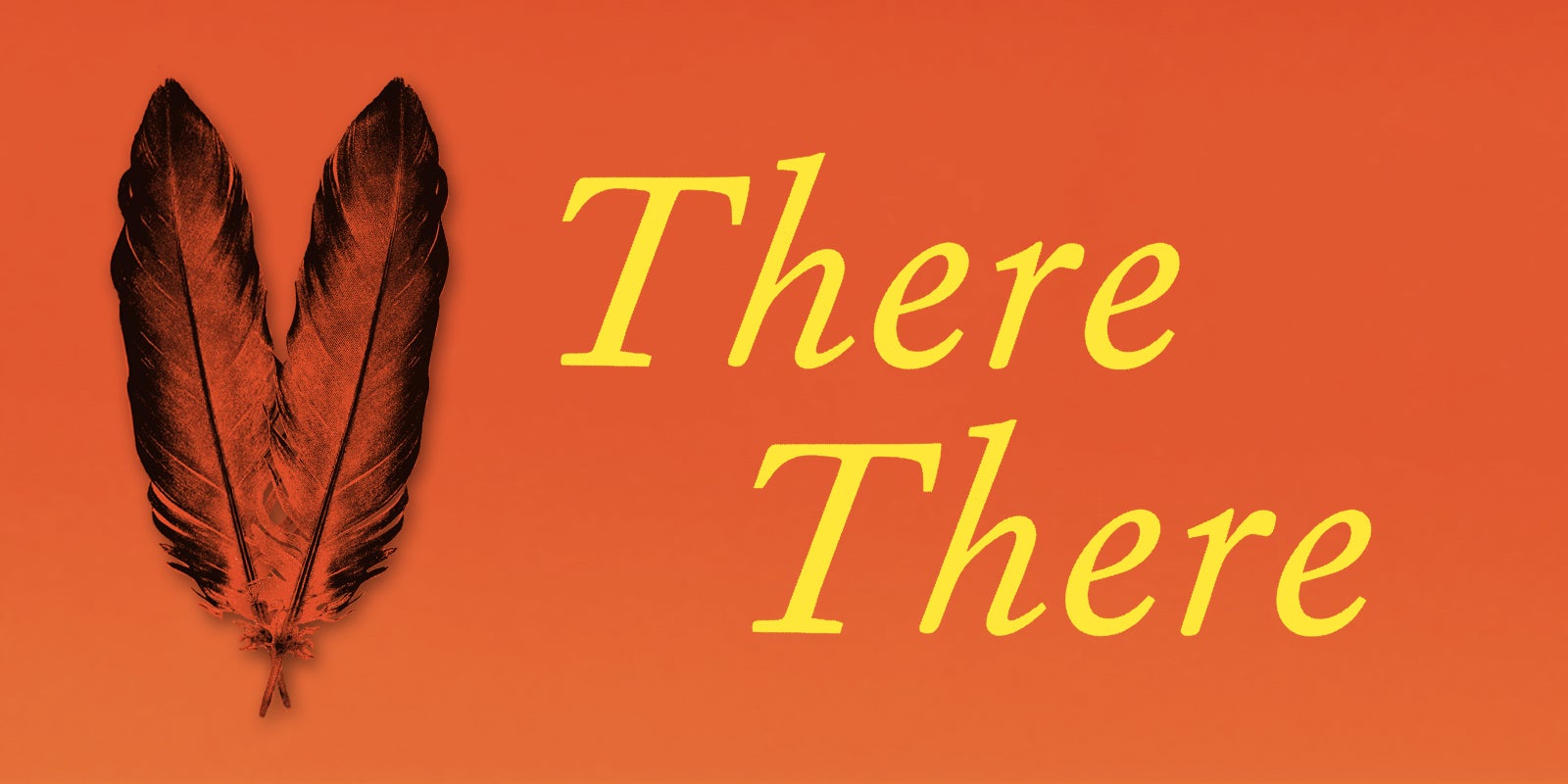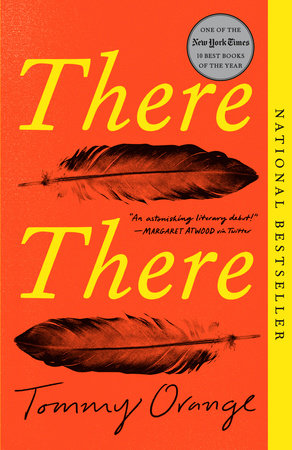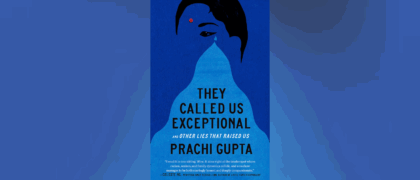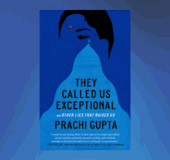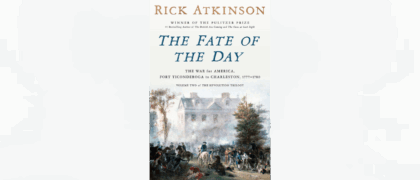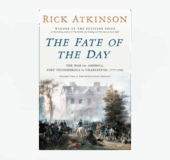There There is a multivoiced novel that features twelve Native American characters of different backgrounds and generations all traveling to the Big Oakland Powwow. Together, this chorus of voices tells of the plight of the urban Native American, grappling with a complex and painful history.
In an interview with The New Yorker, Tommy Orange explained the importance of featuring these twelve narrators within his debut novel:
“Native people suffer from poor representation as it is, but having little representation in literature, as well as no (literary) version of our (urban Native) experience, was what made me want to write into that space, that void, and try to honor and express fully all that it entails to be Native and be from Oakland.”
In the following excerpt from There There, Tommy Orange discusses the history of genocide against Native Americans—first through callous violence, and later through forced urbanization.
Indian Head
There was an Indian head, the head of an Indian, the drawing of the head of a headdressed, long haired, Indian depicted, drawn by an unknown artist in 1939, broadcast until the late 1970s to American TVs everywhere after all the shows ran out. It’s called the Indian Head Test Pattern. If you left the TV on, you’d hear a tone at 440 hertz—the tone used to tune instruments—and you’d see that Indian, surrounded by circles that looked like sights through rifle scopes. There was what looked like a bullseye in the middle of the screen, with numbers like coordinates. The Indian head was just above the bullseye, like all you’d need to do was nod up in agreement to set the sights on the target. This was just a test.
In 1621, colonists invited Massasoit, chief of the Wampanoags, to a feast after a recent land deal. Massasoit came with ninety of his men. That meal is why we still eat a meal together in November. Celebrate it as a nation. But that one wasn’t a thanksgiving meal. It was a land deal meal. Two years later there was another, similar meal, meant to symbolize eternal friendship. Two hundred Indians dropped dead that night from supposed unknown poison.
By the time Massasoit’s son Metacomet became chief, there were no Indian-Pilgrim meals being eaten together. Metacomet, also known as King Phillip, was forced to sign a peace treaty to give up all Indian guns. Three of his men were hanged. His brother Wamsutta was let’s say very likely poisoned after being summoned and seized by the Plymouth court. All of which lead to the first official Indian war. The first war with Indians. King Phillip’s War. Three years later the war was over and Metacomet was on the run. He was caught by Benjamin Church, Captain of the very first American Ranger force and an Indian by the name of John Alderman. Metacomet was beheaded and dismembered. Quartered. They tied his four body sections to nearby trees for the birds to pluck. John Alderman was given Metacomet’s hand, which he kept in a jar of rum and for years took it around with him—charged people to see it. Metacomet’s head was sold to the Plymouth Colony for thirty shillings—the going rate for an Indian head at the time. The head was spiked and carried through the streets of Plymouth before it was put on display at Plymouth Colony Fort for the next twenty five years.
“Thanksgivings like these happened everywhere, whenever there were, what we have to call: successful massacres.”
In 1637, anywhere from four to seven hundred Pequot were gathered for their annual green corn dance. Colonists surrounded the Pequot village, set it on fire, and shot any Pequot who tried to escape. The next day the Massachusetts Bay Colony had a feast in celebration, and the governor declared it a day of thanksgiving. Thanksgivings like these happened everywhere, whenever there were, what we have to call: successful massacres. At one such celebration in Manhattan, people were said to have celebrated by kicking the heads of Pequot people through the streets like soccer balls.
The first novel ever written by a Native person, and the first novel written in California, was written in 1854, by a Cherokee guy named John Rollin Ridge. His novel, The Life and Adventures of Joaquin Murieta, was based on a supposed real-life Mexican bandit from California by the same name, who, in 1853, was killed by a group of Texas rangers. To prove they’d killed Murrieta and collect the five thousand dollar reward put on his head—they cut it off. Kept it in a jar of whiskey. They also took the hand of his fellow bandit Three Fingered Jack. The rangers took Joaquin’s head and the hand on a tour throughout California, charged a dollar for the show.
The Indian head in the jar, the Indian head on a pike were like flags flown, to be seen, cast broadly. Just like the Indian head test pattern was broadcast to sleeping Americans as we set sail from our living rooms, over the ocean blue green glowing airwaves, to the shores, the screens of the new world.
Rolling Head
There’s an old Cheyenne story about a rolling head. We heard it said there was a family who moved away from their camp, moved near a lake—husband, wife, daughter, son. In the morning when the husband finished dancing, he would brush his wife’s hair and paint her face red, then go off to hunt. When he came back her face would be clean. After this happened a few times he decided to follow her and hide, see what she did while he was gone. He found her in the lake, with a water monster, some kind of snake thing, wrapped around her in an embrace. The man cut the monster up and killed his wife. He brought the meat home to his son and daughter. They noticed it tasted different. The son who was still nursing said, my mother tastes just like this. His older sister told him it’s just deer meat. While they ate a head rolled in. They ran and the head followed them. The sister remembered where they played, how thick the thorns were there, and she brought the thorns to life behind them with her words. But the head broke through, kept coming. Then she remembered where rocks used to be piled in a difficult way. The rocks appeared when she spoke of them, but didn’t stop the head, so she drew a hard line in the ground which made a deep chasm the head couldn’t cross. But after a long heavy rain, the chasm filled with water. The head crossed the water, and when it reached the other side, it turned around and drank all that water up. The rolling head became confused and drunk. It wanted more. More of anything. More of everything. And it just kept rolling.
“All the way from the top of Canada, the top of Alaska, down to the bottom of South America, Indians were removed then reduced to a feathered image.”
One thing we should keep in mind, moving forward, is that no one ever rolled heads down temple stairs. Mel Gibson made that up. But we do have, those of us who saw the movie, in our minds the rolling heads down temple stairs in a world meant to resemble the real Indian world in the 1500s in ancient Mexico. Mexicans before they were Mexicans. Before Spain came.
We’ve been defined by everyone else and continue to be slandered despite easy-to-look-up-on-the-internet facts about the realities of our histories and current state as a people. We have the sad, defeated Indian silhouette, and the rolling heads down temple stairs, we have it in our heads, Kevin Costner saving us, John Wayne’s six-shooter slaying us, an Italian guy named Iron Eyes Cody playing our parts in movies. We have the litter-mourning, tear-ridden Indian in the commercial (also Iron Eyes Cody), and the sink-tossing, Jack Nicholson saving, crazy Indian who was the narrator in the novel, the voice of One Flew Over the Cuckoo’s Nest. We have all the logos and mascots. The copy of a copy of the image of an Indian in a textbook. All the way from the top of Canada, the top of Alaska, down to the bottom of South America, Indians were removed then reduced to a feathered image. Our heads are on flags, jerseys, and coins. Our heads were on the penny first, of course, the Indian head cent, and then on the buffalo nickel, both before we could even vote as a people—which, like the truth of what happened in history all over the world, and like all that spilled blood from slaughter, is now out of circulation.
Massacre as Prologue
Some of us grew up with stories about massacres. Stories about what happened to our people not so long ago. How we came out of it. At Sand Creek, we heard it said that they mowed us down with their howitzers. Volunteer militia under Colonel John Chivington came to kill us, we were mostly women, children, and elders. The men were away to hunt. They’d told us to fly the American flag. We flew that and a white flag too. Surrender, the white flag waved. We stood under both flags as they came at us. They did more than kill us. They tore us up. Mutilated us. Broke our fingers to take our rings, cut off our ears to take our silver, scalped us for our hair. We hid in the hollows of tree trunks, buried ourselves in sand by the riverbank. That same sand ran red with blood. They tore unborn babies out of bellies, took what we intended to be, our children before they were children, babies before they were babies, they ripped them out of our bellies. They broke soft baby heads against trees. Then they took our body parts as trophies and displayed them on stage in a downtown Denver. Colonel Chivington danced with dismembered parts of us in his hands, with women’s pubic hair, drunk, he danced, and the crowd gathered there before him were all the worse for cheering and laughing along with him. It was a celebration.
Hard, Fast
Getting us to cities was supposed to be the final, necessary step in our assimilation, absorption, erasure, completion of a five hundred year old genocidal campaign. But the city made us new, and we made it ours. We didn’t get lost amidst the sprawl of tall buildings, the stream of anonymous masses, the ceaseless din of traffic. We found each other, started up Indian Centers, brought out our families and powwows, our dances, our songs, our beadwork. We bought and rented homes, slept on the streets, under freeways, we went to school, joined the armed forces, populated Indian bars in the Fruitvale in Oakland, and in the Mission in San Francisco. We lived in boxcar villages in Richmond. We made art and we made babies and we made way for our people to go back and forth between reservation and city. We did not move to cities to die.
“The city made us new, and we made it ours.”
The sidewalks and streets, the concrete absorbed our heaviness. The glass, metal, rubber and wires, the speed, the hurtling masses—the city took us in. We were not Urban Indians then. This was part of the Indian Relocation Act, which was part of the Indian Termination Policy, which was and is exactly what it sounds like. Make them look and act like us. Become us. And so disappear. But it wasn’t just like that. Plenty of us came by choice, to start over, to make money, or just for a new experience. Some of us came to cities to escape the reservation. We stayed after fighting in the second world war. After Vietnam too. We stayed because the city sounds like a war, and you can’t leave a war once you’ve been, you can only keep it at bay—which is easier when you can see and hear it near you, that fast metal, that constant firing around you, cars up and down the streets and freeways like bullets. The quiet of the reservation, the side-of-the-highway towns, rural communities, that kind of silence just makes the sound of your brain on fire that much more pronounced.
Copyright © 2018 by Tommy Orange. All rights reserved. No part of this excerpt may be reproduced or reprinted without permission in writing from the publisher.
Learn more about There There by clicking the link below:

